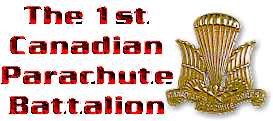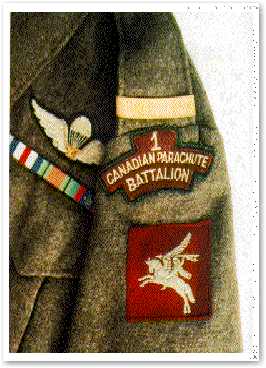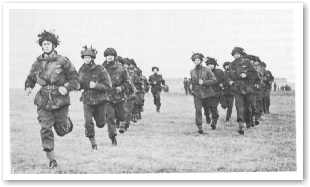
Actually within perhaps 20 minutes from the time they had stepped from their planes they had closed in on the pillbox after overcoming protecting land mines and silencing snipers...Highly dangerous work, even in the training scheme, starts when the heavy barbed-wire entanglements have to be demolished. Two paratroopers crawl slowly, pushing a Bangalore torpedo that looked like a big rocket on a long pipe, wriggling close to the ground, they inch it forward into the thickest section of the wire, under covering fire from comrades they withdraw quickly.
Seconds later there is a roaring blast. The barbed wire has disappeared. The sharp explosions of the torpedoes destroying the wire around the pillbox end. The hand grenades hurtle in. Under well-placed protection two or three men of a special demolition detail among the paratroopers appear from nowhere and creep like cats to the pillbox...The charge is set and dark figures move quickly across the shaded part of the clearing, taking advantage of deep grass, small bushes - even shadows - to place distance between themselves and the pillbox. Within a few seconds the explosion occurs.


